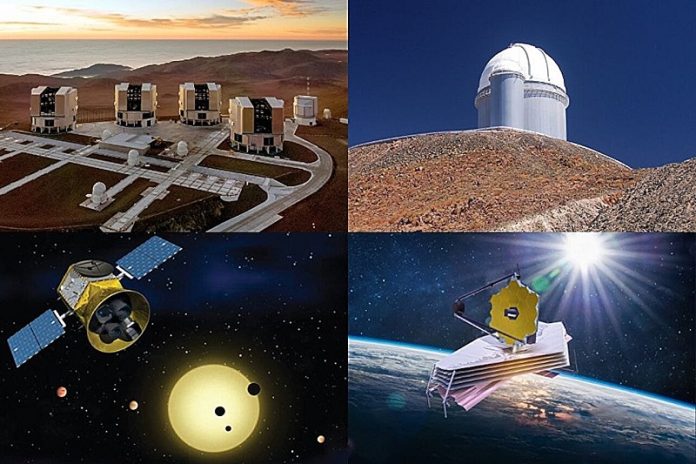
Scientists have confirmed the presence of a fifth planet around the nearby star L 98-59, and it might be able to support life.
The discovery was made by a team from the Université de Montréal’s Trottier Institute for Research on Exoplanets (IREx).
Their new study gives us the most detailed look yet at the L 98-59 planetary system, located just 35 light-years from Earth—a relatively close neighbor in astronomical terms.
The fifth planet, named L 98-59 f, lies in what’s called the habitable zone—the area around a star where temperatures are just right for liquid water to exist.
This makes it a prime candidate for future studies that could explore whether the planet might be capable of supporting life.
The team’s research, soon to be published in The Astronomical Journal, is based on careful analysis of existing data from multiple telescopes, including NASA’s TESS space telescope and advanced instruments in Chile like the HARPS and ESPRESSO spectrographs.
By refining how they analyzed the data—using new methods to filter out noise caused by the host star—they were able to uncover clearer signals from the planets.
The L 98-59 system was first known to contain three small planets discovered by TESS in 2019. A fourth planet was later revealed using ground-based observations. All of these planets are packed closely together, orbiting their small red dwarf star at distances much closer than Mercury is to our sun.
Now, the newly confirmed fifth planet adds even more intrigue to this compact system.
While this fifth planet doesn’t pass in front of the star from our viewpoint—meaning we can’t see it transit like some of the others—its gravitational pull on the star was strong enough to be detected through changes in the star’s motion.
What’s exciting is that this planet receives a similar amount of energy from its star as Earth does from the sun, raising hopes it could have Earth-like temperatures.
The other planets in the system are fascinating in their own right. The innermost one is smaller than Earth—just 84% its size and about half its mass. Two others may be volcanically active, similar to Jupiter’s moon Io, and one appears to be a “water world” with a lower density than Earth, suggesting it could contain large amounts of water.
All of the planets studied so far appear to have nearly perfect circular orbits, which is good news for scientists who want to study their atmospheres. Stable orbits like these make it easier to predict when and how to observe them using advanced tools like the James Webb Space Telescope (JWST), which is already beginning follow-up observations of the system.
The ability to find such detailed information using existing data is a major step forward. Instead of requesting more telescope time, the researchers used smarter ways of analyzing what we already had. This shows the hidden potential in the data archives, just waiting to be uncovered with improved methods.
With its mix of rocky worlds, potential water planets, and a promising candidate in the habitable zone, L 98-59 is now one of the most exciting planetary systems for future exploration. Scientists are eager to learn more about whether these planets can hold onto their atmospheres—and perhaps even host life.



